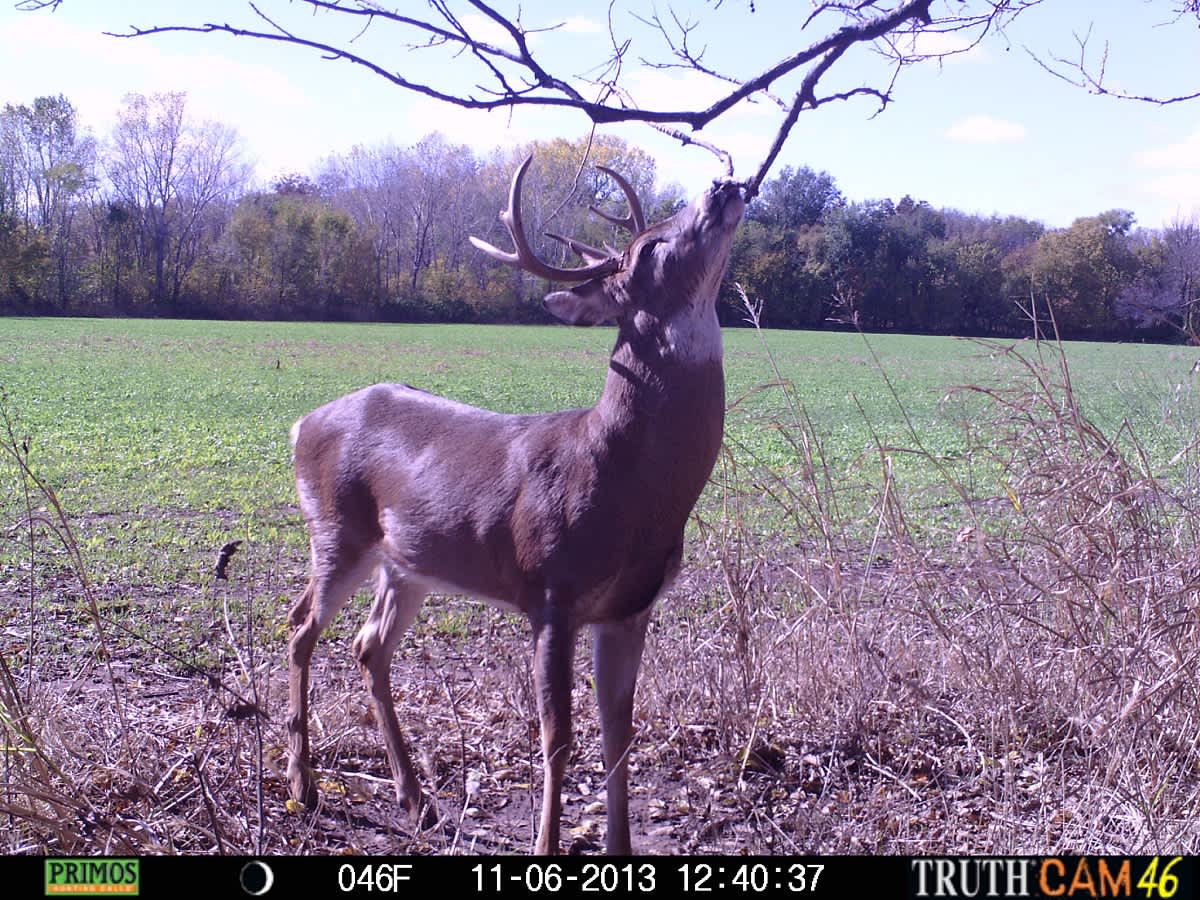4 Reasons Why You’re Not Shooting Bucks on Your Food Plots
Bernie Barringer 09.02.14

You’ve gone to a lot of work to plant and maintain your food plots, but for some reason, you aren’t seeing the bucks in them during the fall hunting season. Here are four things you may be doing wrong.
I have a small property compared to most people who plant food plots to attract deer. However, my small piece of property is surrounded on three sides by a large state park that allows no hunting. This gives me a distinct advantage in some obvious ways, but because I have a very limited space to plant food crops for deer, I have to choose my plantings carefully and there is little margin for error.
Like many people who manage their land for hunting, I have been frustrated by the occasional ineffectiveness of my food plots. I have learned some things through trial and error that may help you plant food plots in a way that will attract the bucks when you most want to: during the fall hunting season. Consider that you may be making one or more of these mistakes.

You have the wrong perspective on food plots
Too many people think they can just put some seeds in the ground and deer will come. You need to go deeper—having a year-round mindset when planting food plots is the key to success. If you are just hoping to attract deer to your food plots during the hunting season, you are really looking at the issue in the wrong way. The key to having bucks on your property during the hunting season is having does on your property during hunting season.
Does have small home ranges and want to raise their fawns where they feel secure, and where premium food is available. Keeping does’ attention year-round will significantly increase your odds of having mature bucks using those food plots come fall. This often means having food plots that are planted in various plants that are attractive through the seasons of the year. It may also mean you must plant one crop in the spring and then disc it up and replant with another in late summer. One example is to frost seed clover for the summer, then plant chicory, brassicas, and cereal grains in late summer. Address the needs of deer all year long and you will have them eating out of your hand during hunting season.
You’re planting the wrong seed
Some of the most common plants used in food plots have more specific attractiveness at certain times of the year than others. Clover, for example, is a good summer food source and deer pile into it with gusto. But as fall moves along, the plants may be grazed down to stumps and with the first frost, the clover has little value to deer.
The same goes with many types of brassicas. Radishes and turnips are relished by deer in the first few weeks after the come-up, but plants put in during the spring or early summer are woody and less palatable by fall. You can plant turnips and radishes for early bow season in late July to early August, but if you want sweet, leafy plants in November, consider waiting until September to plant them. Keep in mind that these plants need warm soil to grow well, and that means nights that drop below freezing will significantly inhibit their growth. Keep that in mind as you choose when to plant based on your particular climate.
Turnips and radishes provide excellent late-season food well into the winter long after their leaves are broken down. Deer will eat the tubers as long as they can get dig them out of the frozen ground.
Your food plots are the wrong size
With food plots, size does matter. I considered planting a one-acre food plot of corn and soybeans because I know they are very attractive to deer during the fall and they’re cheap to plant. Thankfully a friend offered me some good advice. He said the plants would be chewed down to the point that there wouldn’t be much left come hunting season. When planting corn and soybeans you need large food plots, ideally at least three acres, to have enough space so the plants mature and produce seed before deer crop them off.
Small food plots do well with crops that produce lots of tonnage per acre. Alfalfa, clover turnips, and radishes are good choices for small plots. They produce three to five tons per acre, giving deer plenty to eat all summer and fall while still remaining green and lush. Use a seed blend with a variety of these plants for best results.

You’re planting in the wrong place
Just building a food plot doesn’t mean that deer will come. You may be putting your food plots where deer don’t feel secure, or your plots may be too far from bedding cover. The longer it takes deer to travel to the food, the less likely they are to show up before dark. Do deer have to cross open areas to get to your food plot? If so, they may hesitate to come during legal shooting hours. Plant as near bedding cover as you can.
The best food plots where deer have security and feel comfortable during daylight will have good escape cover around them. While large plots may be needed to feed deer during the year, small plots tucked away in good, secure cover are the ones most likely to put you in front of a mature buck during the hunting season.
Take inventory of your food plots and see if they meet these criteria. If they don’t, consider making some changes to increase your odds of bagging a big buck off your food plot in the coming years.
Follow Bernie’s bowhunting adventures on his blog, bowhuntingroad.com.

